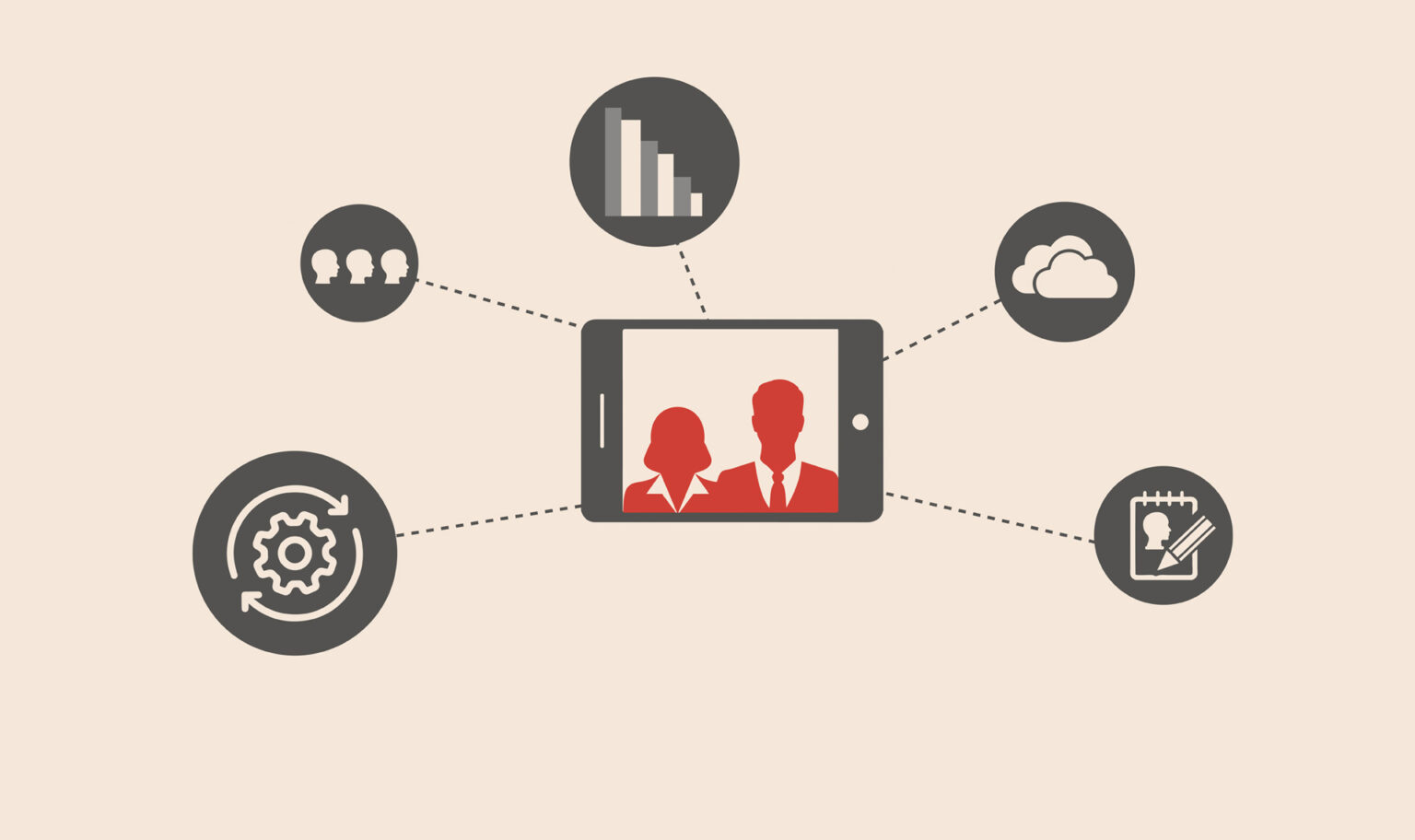The HR tech space is exploding, with over 135 start-ups innovating across the value chain. Silicon Valley remains unquestionably the hub for start-ups, but London is also continuing to emerge as a leader and key hub of development and innovation.
Due to the sheer volume of start-ups and how fragmented the HR Tech space is, it can be difficult for HR leaders to keep abreast of new and emerging technologies and prioritise which technologies are worth exploring.
With that in mind, we recently welcomed a selection of Group HRDs to a breakfast discussion on emerging HR technology trends hosted by Lisa Gerhardt, Partner and Global Lead for Savannah Group’s Global HR Practice. The presentation and discussion were facilitated by Devyani Vaishampayan and Martin Sawkins of the HR Tech Partnership, an investment fund that specialises in the ‘People Tech Start-up’ area. Devyani and Martin are uniquely placed in that they both have experience as Group HRDs (Martin also currently serves as an NED for both Wincanton PLC and Scapa PLC) and, due to their role in the fund, have regular exposure to the most exciting and interesting new start-ups within the HR tech space.
The presentation and discussion focused on the workplace as a native function, what the trends and emerging technologies are and what the HR function can do to encourage innovation. Around the table, several HR leaders were using and experimenting with various forms of new HR technology within their organisations and were able to give insight into the success and challenges they had experienced so far.
Key Emerging Technologies In HR
Recruitment
Many large organisations have always had some kind of screening technology, but the next generation of screening technology, automated screening, is getting very sophisticated. This new type of technology is being paired with chat bots, and ultimately will be able to set up interviews and, through facial expression analysis and video interviewing, will likely start running early parts of the interview process. Some of the bigger organisations are trialling this successfully and are seeing it reap significant benefits in terms of both time and cost savings.
It does however rely on having a very good data set and the implementation and learning phase can be quite slow. There are also some potential hurdles to overcome in terms of data privacy and ensuring that there is enough accountability and explainability of the process so that if challenged, an organisation can explain why a candidate was rejected.
Chatbots
Chatbots have become increasingly popular, and there are hundreds of start-ups in the space. Following their success and popularity in customer service and marketing, chatbots are increasingly being deployed within HR. For years, cost and sophistication has been holding organisations back, but as sophistication increases and costs decrease, they are becoming increasingly more attractive to organisations. The chatbot space is very crowded, with over 250 start-ups in the US alone.
Artificial Intelligence and Machine Learning
A very popular topic in the press due to the exciting (and sometimes terrifying!) potential use cases, AI and specifically machine learning are paving the way for an incredibly advanced type of technology deployment within businesses. Largely the reserve of enterprise sized technology companies, systems like IBM’s Watson, Salesforce’s Einstein and Google’s Deep Mind labs are developing technologies that can process vast quantities of data to find relationships and patterns that were previously unthinkable to human analysts. When paired with larger data sets as a result of more sophisticated recruitment, wellness and L&D programs, from an HR function’s perspective, machine learning could be used to identify patterns among the highest performing, happiest, and most engaged individuals to further assist recruitment and L&D.
Blockchain
Not just limited to currency type applications like Bitcoin, blockchain can help HR to provide a better audit trail on sensitive issues. Sexual harassment cases for example, where a rogue individual or organisation may try to erase evidence of a complaint being lodged could instead be securely stored on the blockchain to avoid tampering. Very recently, the Ethereum blockchain was used for just that, after a Chinese student activist had an open letter censored after requesting information about a decade-old sexual misconduct case at the prestigious Peking University where she was a student. Referencing could be uploaded to a blockchain as well, allowing universities to upload verified qualifications so that organisations can check and verify the accuracy of an individual’s education.
Virtual Reality
VR is typically thought of as an immersive media experience for gaming or exploring a yet to be built physical space, but it’s also finding a place in HR. From a diversity and inclusion perspective, virtual reality (VR) can be used to emotionally immerse an individual and create a consequential shift in terms of their behaviour. For instance, one type of technology allows a user to wear a VR headset and inhabit a virtual body of the opposite gender. Studies have shown that ‘living’ inside a body of the opposite sex for just 20 minutes can create a powerful change to an individual’s outlook. This type of emotional immersion can also be used to help understand mental health issues.
Facial Recognition
From a retail point of view, facial recognition is increasingly being used to see what areas of a shop customers gravitate towards and how they react to products, offers or display items. From an HR point of view, this could either be used in a team training environment or in a larger space, for instance a canteen, to get an understanding of morale or motivation when the organisation is going through a big change for instance a merger or acquisition.
Key Trends In HR
Recruitment
One of the areas where we are seeing the most disruption is recruitment and specifically how to enhance the employer brand while making the process more efficient. There are more than 250 recruitment tech start-ups alone, with volume recruitment a popular area of focus for many of these start-ups. Culture and team fit is also a significant focus for these start-ups, and some are hoping to incorporate advanced psychometrics to give a more accurate fit.
Learning and development
L&D used to largely consist of a content depositary that relied on the individual to find what they needed. There have been videos and interactivity in the past, but it was often expensive and not hugely sophisticated. Learning and telling isn’t the favoured style of approach any more, and there is a big shift to focus on the individual rather than L&D being an organisational initiative. The thinking is that if learning is a life-long process, let’s have something that individuals can carry with themselves as they move from organisation to organisation. There is also a trend to create sophisticated curated content which is much more engaging and dynamic than previous versions.
Employee engagement and feedback
Marketing is a good function to look at for innovation – whatever becomes popular from a consumer branding point of view normally then gets applied to employer branding. Surveying tools have become much better and predictive analytics have made the process of issuing, populating and analysing surveys faster, allowing organisations to gather feedback more regularly and more quickly.
Wellness
There are a number of start-ups that are shifting their focus from the crowded consumer wellness space to corporate wellness. This can be physical wellness but also financial wellness such as clearing and restructuring debt, discounts etc. While these types of systems have been around for a while, there is now a move to make them more mobile, more accessible, and to be proactive in prompting and supporting an individual.
The Gig Economy
Historically certain industries have had high numbers of contractors such as oil and gas, but a more flexible approach to work is getting more popular across other industries. The gig economy is much more than just a difference in payroll. Businesses are seeing the advantages of flexibly outsourcing specific parts of their processes, and individuals like the empowerment and freedom to choose their next assignment.
Performance Management
Interestingly, performance management is a space which is quite underdeveloped from a start-up perspective. There are solutions that look at feedback but nothing that covers the whole life cycle from strategy and interaction through to performance management and how to have difficult conversations.
HR Operations Automation
Probably one of the biggest areas for disruption is how HR runs itself, and the next phase of automation for HR functions is underway. Interestingly, the start-ups active in this space don’t typically see HR as the customers and are instead approaching line managers directly. These start-ups are creating solutions for a problem that they think HR are creating. Similarly, this is happening in Finance, and is part of a bigger back office automation theme.
What is appealing for businesses now is that these systems and applications are much easier to deploy rather than the big systems that have traditionally been bought for huge expense and took time and effort to deploy. There is an argument however that deploying numerous ‘mini’ systems to automate a specific part of the HR function may lead to a fragmented, inefficient and disjointed function.
Challenges for HR Leaders
From HR’s point of view, the fact that many tech start-ups are approaching line managers directly could be seen as a challenge to the control they have over an organisation. In reality, it’s very hard for any HR function to have absolute control over every HR process in every location, particularly for international businesses. This does however present some organisational challenges particularly in terms of continuity of service or leveraging economies of scale when you have a number of different locations using niche software to solve specific problems. Whereas the trend several years ago was around integrating technologies, in a lot of ways, this latest trend is a move towards the opposite and HR leaders will increasingly need to get comfortable with managing ambiguity.
The Role of The HR Leader
As the technology develops, HR leaders will be expected to create an ever-more engaging and personalised employee experience while improving productivity and keeping costs under control. Similarly, technology will impact organisational development, workforce planning, reskilling and ultimately create a cultural change. HR leaders also have a role to play from an ethical perspective, as data privacy and data ownership issues increasingly effect organisations.
As a result, it’s important for HR leaders to stay up to date with start-ups, as well as looking at their innovation hub and considering how to experiment and disrupt current processes.
Although a daunting and sizeable task, this provides a great opportunity for HR leaders to make a difference and play a key strategic role in their organisation.





